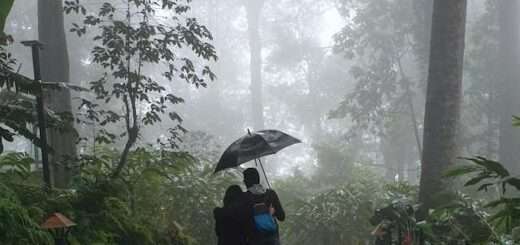K2, The Killer Mountain of the World – By I. Gul
As I read the news, and watched it on Television, memories of my mountaineering days came back and deprived me of my sleep bringing nightmares of my own struggle on K2 the Savage Mountain, and nostalgia of teamwork during our dangerous descent. This tragedy also faced the same challenges but in contrast
we are alive to tell the ordeal graced by human will, endurance, team spirit and luck.
K2 towering 8,611m (28,251ft) is indeed a formidable mountain. Most expeditions prefer using the traditional route via Abruzzi Ridge, Pyramid, Spider Ridge and then the summit. On this route Camp III is located above 7000m and this is the closest you can reach to safety. It also means that in case of bad weather expeditions have to wait days before making a halfway attempt to summit. This midway is Camp IV at 8000m and only halfway to the mountain. Most, it is the Death Zone. Any prolonged stay at this camp results in very fast physical deterioration. Climbers usually descend to camp III or advance base camp to climb up once again. This means extra strain on lungs, sinews and limbs.
In clear weather, expeditions prefer a dash from Camp IV past midnight if the moon is in the second or third quarter. These expeditions have a higher rate of success and survival because they descend from the summit while it is still day. But the not so lucky ones make the dash 2-3 hours later, meaning the descent has to be in darkness. The summit of K2 with Gashebrum I (Hidden Peak that I reached), Broad Peak, Gashebrum II and IV and Chogolisa make a gulley that creates spiralling wind gusts. If this wind blows (100-150 KMPH, with chill factor of over minus 50C), the expeditions on top are doomed. Normally, just below the summit, K2 has a ring of clouds just like the Saturn Planet, with the peak clearly above it. It is this cloud that lurks like an angle of death and strong winds accounting for over 27% mortality rate on this Savage Mountain.
The route from Camp VI follows a ridge which is very deceptive. The slope is gradual, glaciated with seracs and hard loose rocks. At some places, both ascent and descent without ropes is impossible. There is a web of ropes abandoned by past expeditions both lucky and unlucky. Successful expeditions have usually relied on their own fixed ropes. The fatal ones have erred using old ropes, or fixed themselves to wrong ones in the darkness. The most unfortunate ones have plummeted to death.
Once an expedition makes it to the top, one of the fatal errors is hanging around for too long. The thin oxygen makes tediously to the lungs and climbers are already delirious when they reach the summit. Many climbers in this condition of mental inertia hang around far too long and by the time they descend, altitude and sickness have already taken their toll. Thus begins the most difficult part of the expedition in darkness; getting down from the summit along the ridge, spider ridge and straight to camp III. With climbers at their weakest the savage mountain chooses to strike.
My attempt on K2 was a failure due to reasons mentioned above and became a battle for survival. Very fast chilling winds above spider ridge, darkness, crumbling seracs and avalanches of snow blocks and stones missed us by margins. However God was on our side and we were lucky to fix ourselves to the right abandoned ropes. Reaching Camp III seemed like reaching home.
One of the most heroic attempts and survival was made by a US expedition led by Charles Houston in the 50s. The expedition failed due to a storm which pinned the team down for ten days at 7800 m (25,590 ft). A desperate retreat followed, during which Pete Schoening saved almost the entire team during a mass fall, and Gilkey was killed, either in an avalanche or in a deliberate attempt to avoid burdening his companions. The courage shown by the team has given the expedition iconic status in mountaineering history. Many a times, the most weakened have put themselves in a sleeping bag and waited to die because rescue was not possible. I had found one such Austrian Expedition in 1982 and the best burial we could give them was to toss their bodies into a crevasse.
Many friends in adventure I know are no more there. Nick Escourte died while attempting a new route. His companions Peter Boardman and Joe Tasker fell to death from the most difficult pinnacles of Everest. My buddy Hussain on summit of Hidden Peak (8068 m) was hit along with his Korean Expedition after making the summit of K2 in 1986 on the same route. Maurice Barret and his wife whom I met on my route to Hidden Peak in 1982 also died on this Savage Mountain. My inspirational colleague Major Fayyaz is renowned in his most daring mountain rescue. It was perhaps in 1984 that he carried a very sick and frost bitten Rutkiewicz Wanda on his back from camp III to base camp of K2. Wanda, the most accomplished lady of mountains ultimately fell to the curse of this mountain. Ironically the saviour of Wanda died in 1986 on Hidden Peak.
Meharban, a high altitude porter in this expedition had already summitted K2. He was the recipient of Pride of Performance, live and died in mountains.
Legend once had it that K2 carries a curse for women. The first woman to reach the summit was Wanda Rutkiewicz, of Poland, in 1986. The next five women to reach the summit are all deceased — three of them died on the way down, among them fated British mountaineer Alison Hargreaves in 1995. Wanda herself died on Kangchenjunga in 1992. The curse was broken in 2004 when Edurne Pasaban summitted and descended successfully, and again in 2006 when Nives Meroi of Italy and Yuka Komatsu of Japan became, respectively, the seventh and eighth women to summit K2, both descending successfully.
Some data references taken from Wikipedia.













